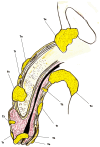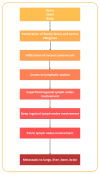Exploring the Multifactorial Landscape of Penile Cancer: A Comprehensive Analysis of Risk Factors
- PMID: 39202278
- PMCID: PMC11353487
- DOI: 10.3390/diagnostics14161790
Exploring the Multifactorial Landscape of Penile Cancer: A Comprehensive Analysis of Risk Factors
Abstract
Penile cancer, while rare, is a critical public health issue due to its profound impact on patients and the complexities of its management. The disease's multifactorial etiology includes risk factors such as HPV infection, poor hygiene, smoking, genetic predispositions, and socioeconomic determinants. This article provides a comprehensive review and analysis of these diverse risk factors, aiming to enhance understanding of the disease's underlying causes. By elucidating these factors, the article seeks to inform and improve prevention strategies, early detection methods, and therapeutic interventions. A nuanced grasp of the multifactorial nature of penile cancer can enable healthcare professionals to develop more effective approaches to reducing incidence rates and improving patient outcomes.
Keywords: circumcision; early detection; epidemiology; human papillomavirus; penile cancer; risk factors.
Conflict of interest statement
The authors declare no conflicts of interest.
Figures
References
-
- Chaux A., Netto G.J., Rodríguez I.M., Barreto J.E., Oertell J., Ocampos S., Boggino H., Codas R., Bosch F.X., de Sanjose S., et al. Epidemiologic Profile, Sexual History, Pathologic Features, and Human Papillomavirus Status of 103 Patients with Penile Carcinoma. World J. Urol. 2013;31:861–867. doi: 10.1007/s00345-011-0802-0. - DOI - PMC - PubMed




